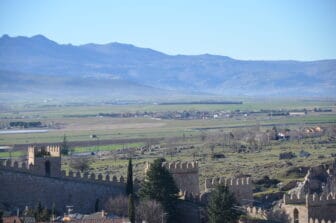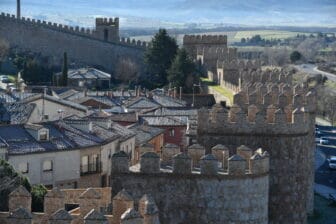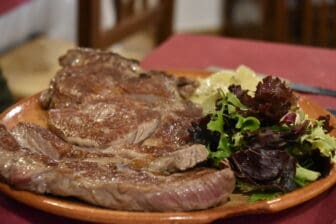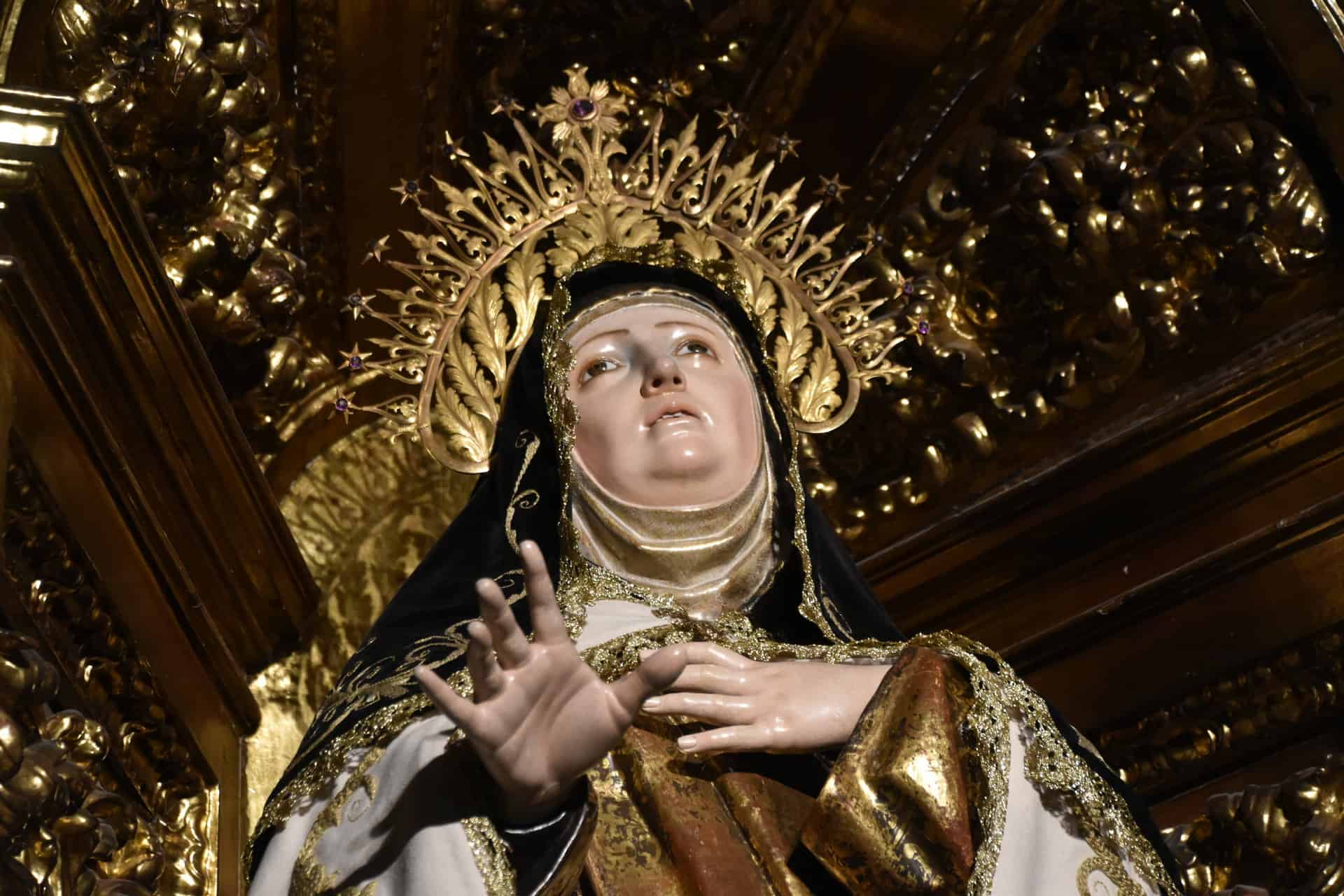
[ Jan.2023 ] Ávila in Castile and León, Spain is famous for St. Teresa as well as its well-preserved medieval walls.
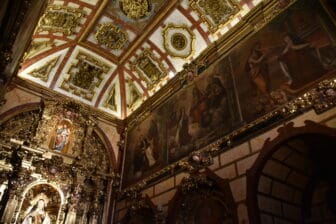
Especially in the Christian world.
St. Teresa was born in this town in 1515 and at the age of 19 entered a Carmelite monastery which has its origin in Palestine in the 12th century.
As she trained as a caretaker of sick nuns, she had a vision of hell in 1560 that inspired her to take on a mission.
And she complains that the rules within the monastery have been lax.
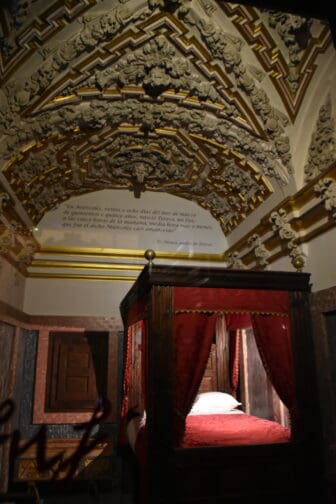
So she founded the ‘Discalced (meaning barefoot) Carmelites’ centred on rigorous prayer and penance and staying poor, and built 17 monasteries in Spain.
They were all nunnery for nuns, but this movement spread outside Spain and also to male monks.
Teresa herself died in 1582, but she was later canonised in 1622.
Ávila has three attractions related to her: the church dedicated to St. Teresa, the room of her relics, and the museum.
According to our guidebook, it was built in 1636 around the room where she was born.
Her natal room was located in a corner of the church and the church itself was gorgeous for her simplicity and sturdiness.
In the room of her mementos (photos strictly prohibited), Teresa’s right ring finger as well as the whip and the cane she used, the bottom of her sandal, and some of her clothes were displayed.
According to a guidebook, it is said that Franco, the dictator kept Teresa’s ring finger by his bed throughout his reign.
That is creepy…
The explanations in this room was also in Japanese.
Believers come all the way.
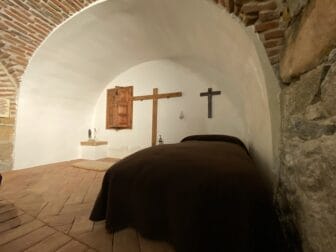
The museum in the annex is a building like a wine cellar.
Here is a replica of the room Teresa spent in the monastery.
Photography was not allowed here either, but it was quite a picturesque space, so I secretly took a few pictures with my mobile phone.
This concludes our tour of Ávila.
After having a light lunch after 2:00pm, the church, the museum, and most of the shops were all closed, so we just walked around the town until the train time.
On the way, we came to Plaza del Mercado Chico, a square with origins in the 11th century.
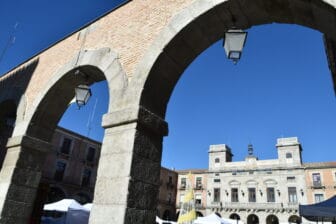
The square was quite busy, and the city hall is also located here.
In one corner, there was a shop which sells local sweets called Yamas de Ávila.
Actually, we bought a small box, but the expiration date came without eating it, so I didn’t taste it.
I imagine it was probably an extremely sweet cake like the one we bought at Ecija.

